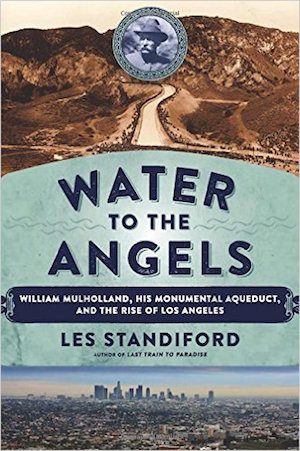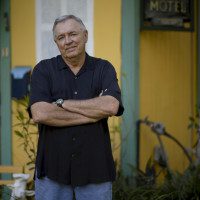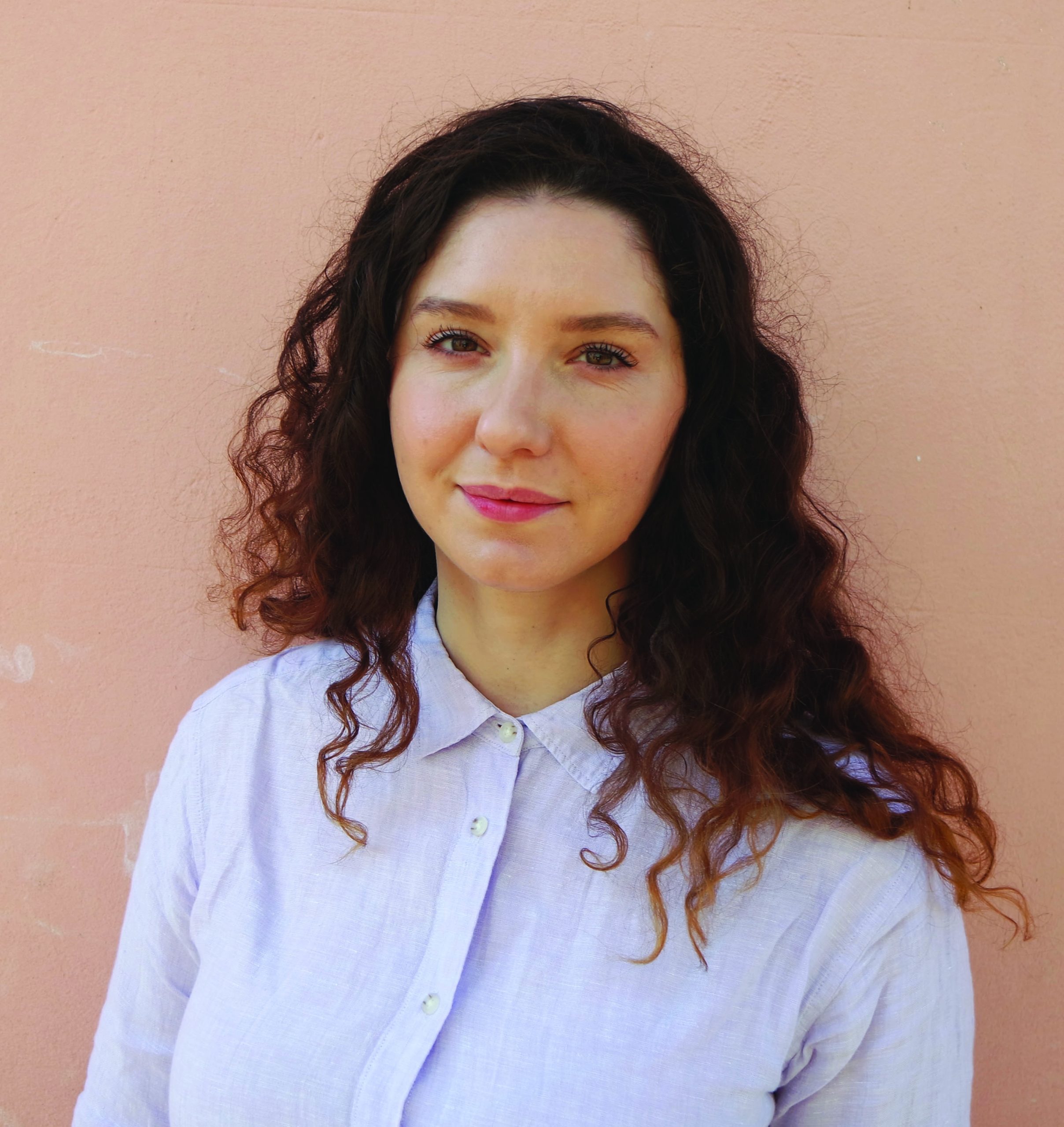In 2012, I began my academic job search as most aspiring English professors do—with a series of interviews in cramped hotel rooms at the MLA and AWP conferences. Every job I applied for held promise in my eyes, but the job I wanted most—it would not be overstating to call this my “dream job”—was the Assistant Professor in Creative Nonfiction position at Florida International University.
That April the program’s director, Les Standiford, called to invite me to campus for a coveted, on-site visit. Such visits, I was learning, were two-day interviews stretched over a series of meals and public presentations where questions I had already done my best to answer at the conference interview were repackaged and repeated in a variety of ways.
But to my surprise and great delight, the FIU visit did not proceed this way. Les picked me up mid-morning at Miami International Airport, and the two of us rode around together for a few solid hours, just taking in the scenery and talking. We paused to visit various landmarks, like the historic Biltmore Hotel and the thriving Books & Books shop in Coral Gables, but mostly we talked—about writing and teaching and living a literary life. I told Les how I once taught at a boarding school in rural Ohio about thirty miles from the town where he was raised. A few weeks later, when he hired me, Les explained he knew if I could make it there—in Barnesville, Ohio, to be precise—then he was certain I could make it anywhere.
Three years later, I asked Les if we could continue our conversation for The Rumpus. I wanted to interview him this time, but we both knew this was code for talking more about writing and teaching and the literary city where we make our home.
***
The Rumpus: Here’s something I’ve always wanted to know: As you go about your day, stepping into the classroom or sitting down to the page, do you think of yourself as a fiction writer, a nonfiction writer, a screenwriter—or simply as a writer?
Les Standiford: I think that one of the effects of the modern world is to push us toward specialization, but that is unfortunate. Remember the concept of the Renaissance person? If I really had to choose or describe myself, I suppose I would say I am a storyteller, but the truth is for the first couple of years out of graduate school, I published mostly poetry in magazines like Kansas Quarterly and Beloit Poetry Journal and others. That poetry tends toward the concrete and the narrative often, but it also has its lyrical component. I think that the training I got in poetry, from Pulitzer prize-winning poet Henry Taylor, has bled over into my fiction and nonfiction. It often irks me when one of my books or prose pieces is reviewed solely on the basis of the subject matter or storyline, when I spend so much of the time on individual word choice, rhythms, and the sonic quality of the sentences.
As far as the forms you mention, I find screenplay writing mostly an intellectual exercise, though studying at the American Film Institute is how I learned to tell a story. We didn’t talk too much in graduate school about story structure, and that’s a shame, I think. Writing wonderful sentences in prose without being able to move a story forward would be a lot like building a fine race car without a motor in it. So far as the difference between writing fiction and nonfiction, as I tell my students, when you get to a place in your short story or novel where you need a fact, you can just make it up. It is fiction after all. But in the narrative nonfiction that I have been writing these past several years, making it up is not an option. If you do not have the fact you need to support your story, then back to your sources you must go. And if you cannot find that fact, then you must change your story to fit what you do have. For me, the aim in nonfiction is not to pile the facts higher and deeper, but to hang them off the spine of a story that is driven by character, just as in fiction. The only difference is that everything is true. Nonfiction writing is a bit more of an intellectual exercise, but it is in its way as enjoyable to me as making it all up.
Rumpus: You mentioned the American Film Institute before. Could you say a little more about your experience studying there?
Standiford: The most important thing I learned there was how to tell a story. As William Goldman says, screenplays are structure. I was always a capable writer, but I really did not know much about how to structure a story. I studied Aristotelian criticism in graduate school, but I had to learn the difference between taking a watch apart and identifying all the parts as opposed to taking a bunch of watch parts and combining them together into a device that looked good and kept time. No one before AFI had ever asked me to do such a thing. I came back from that experience to rewrite a book that had had an important agent and which had been rejected by at least thirty-five publishers in New York. Following the rewrite, the first editor who took a look at it agreed to publish it. Same story elements, same characters, same setting, same guy writing it, but finally there was a motor in that car.
Rumpus: Was that your first book? What year was this?
Standiford: Yes, we are talking about Spill, 1990 (later made into a film, Virus). First draft completed 1980 or so. Writer requires ten years to figure things out. Of course, let’s say one got an itch to learn how to play the guitar well enough for others to want to listen. I’d say ten years would be a reasonable time to fruition.
Rumpus: That sounds right to me. I remember reading once that it takes ten years to be considered an “expert” in anything. Now you mentioned before that you always knew you were a “capable writer,” but when did it occur to you that this talent for writing was going to become a genuine livelihood?
Standiford: I think I was always intending to be a writer, although I may not have intended to be a full-time writer, but someone more like William Carlos Williams, scribbling out the odd scrap on the back of a legal pad or a prescription book. I tried a number of other professions—I went to law school, tried graduate school in psychology, ran a restaurant, worked as a carpenter—but the only thing I ever found satisfaction in was writing and talking about writing and reading. When I realized you could do that as a professor, it was a revelation. And what a relief to find out there was actually a place for me in this world.
Rumpus: Do you find you have had to make any particular sacrifices or concessions in order to live this kind of life, the life of a creative writer and creative writing professor?
Standiford: I really can’t think of any sacrifice that leading the writing life has required of me, except possibly giving up the idea of running for president. In fact, I think that pursuing this career has provided me with a series of wonderful experiences that have enriched my life beyond my wildest imaginings. As I have often said, I feel like a kid who grew up always wanting to be a fireman and woke up one day to discover he was one.
Rumpus: Maybe this is a good time to ask you a little more about your job. Since 1985, you haven’t just been teaching creative writing; you’ve been directing the Master of Fine Arts program in creative writing at Florida International University. Since that time, the program has graduated some extraordinary writers, including novelist Dennis Lehane and inaugural poet Richard Blanco. Is this where you imagined you’d be and what you imagined you’d be doing in 2015?
Standiford: Never did I think that after thirty years I would remain as the director of what I consider to be one of the best writing programs around. If there is a “secret” to this success, I think that it lies in the willingness to bring on board a number of diverse, talented writers and give them freedom to do their work the way they see best. I am perhaps most proud of the fact that no one who has ever come to teach creative writing at FIU during my tenure has quit. I am also very proud of the amazing record of success among our alums, with more than a hundred books published to date and counting. We take on talented students and help them find their intended audiences without trying to stamp acolytes in our own images. There wouldn’t be much but ego in that.
Rumpus: And what about Miami? Would this program have been just as successful somewhere else?
Standiford: Diversity is the key to pleasure in life, as it is to value in learning. That is what students get here, and what we teachers get from each other and our wildly eclectic student body. There are not many places in this country as diverse as this city is, and it is a blessing. My upbringing in southeastern Ohio was nurturing and supportive, though not exactly exotic. I never had shrimp or a taco until I was in college. Compared to Cambridge, Ohio, Miami comes off a lot like the bar in Star Wars. It is a place that has certainly given me a lot of ideas for writing. Still, I think I am the same white bread kid at heart that I was back then, looking at all this amazing stuff around me every day and saying “Damn, would you look at that?”
Rumpus: I’ve only lived here three years, but I have a hunch I’ll always feel that way as well—the daily jolt of life in such a surprising place. When you interviewed me for my position at FIU, I remember you told me then that one of the best things about being a writer in South Florida is that you can set up your life any way you like—the urban high-rise or the beach cottage or a place like yours in Pinecrest with lots of land and trees. When I visited your house for the first time, I also toured your writing studio way out back at the edge of the yard. What does a typical day in that studio look like?
Standiford: That writer’s studio was once a tool shed. When our third child came along and the clamor in our house was at its highest, I got the idea to move the lawn mower, the rakes, and shovels out of there and set about remodeling the place into a usable writing space. It took a while, but I had worked my way through graduate school as a carpenter’s helper. Today of course it is a little haven at the back of our property. I walk about a hundred fifty feet from the house to the studio, and that constitutes my commute to work. When I am working on a book, it is a daily commute, except on teaching days of course. I get there about nine, and I leave about six. I always start by going over the previous day’s work, which is sometimes a light edit and sometimes a total rewrite. I don’t always answer the phone, or pay much attention to email, but I have learned over the years how to compartmentalize. I can have a scintillating discussion with the Dean, and then return to a story as if nothing ever interrupted me—when I have to, that is.
 Rumpus: I’d say the writing studio has served you well. You’ve published twenty books of fiction and nonfiction to date, including most recently the narrative nonfiction project, Water to the Angels, the true story of William Mulholland and the building of the aqueduct that made Los Angeles the metropolis it is today. I know from attending readings you’ve given locally that people are very excited about your nonfiction, but invariably they also want to know whether your famous fictional protagonist, John Deal, will ever return to the page. I think it would be remiss of me not to ask about him here.
Rumpus: I’d say the writing studio has served you well. You’ve published twenty books of fiction and nonfiction to date, including most recently the narrative nonfiction project, Water to the Angels, the true story of William Mulholland and the building of the aqueduct that made Los Angeles the metropolis it is today. I know from attending readings you’ve given locally that people are very excited about your nonfiction, but invariably they also want to know whether your famous fictional protagonist, John Deal, will ever return to the page. I think it would be remiss of me not to ask about him here.
Standiford: A discerning reader might figure out what the natural sequel to Havana Run, the eighth in the John Deal series might be. I intend to write that book one day, but it is just a matter of finding the time. I enjoyed writing about Deal, though I never thought there would be more than one of those stories, let alone eight. Still, he lives on in the back of my mind as if he were a distant relative I simply haven’t seen in a number of years.
Rumpus: So first came poetry, as I have just learned in the course of this conversation, and then came fiction. How did you make the transition from the invented world of John Deal to the research-based projects that have followed?
Standiford: The transition from writing fiction to nonfiction was not all that involved. At first I did wonder what I was going to do with all those facts and figures that had come from my research, but soon I discovered that I would do the one thing I knew how to do and that was tell a story. My aim in this writing has been to bring history alive by focusing on the characters and their reasons for doing some of the more amazing things that students all too often are simply asked to memorize.
Rumpus: So, what made you decide to tell these true-life stories in the first place?
Standiford: It was a kind of an accident really. My agent at the time, Scott Waxman, came to Miami and at my urging took the drive down US-1 to Key West from Miami. On the way, he saw the remains of the great railroad bridges built by Henry Flagler at the turn of the 20th century, destroyed by the hurricane of 1935. When he came back to Miami, he and I talked a bit about it all. He thought it was an amazing story and suggested I might want to write about it. I protested that I was a novelist, but he responded by saying that a good story is a good story, and he had me there. In the end, I took Scott’s advice, wrote up a proposal, and found two publishers bidding on it. The book has done well, now in its 25th printing, and the rest, eight such books later, as they say, is history.
Now these histories do require quite a bit of time both in the research and writing, but they have been gratifying in no small part because they tend to last so long. One of the great surprises and major gratifications of my writing career came during this past year when both Last Train to Paradise and Meet You in Hell turned up on the New York Times bestseller lists as e-books, both having been in print for more than a decade. This points to major changes in publishing of the sort I could never have conceived of twenty years ago. There would not have been enough physical books in all the bookstores in the United States to make such a thing happen.
Rumpus: Which book in your canon would you say was the most difficult to write?
Standiford: Every book has been difficult in its way. If it wasn’t, it probably wouldn’t be worth writing. Certainly the most difficult book to write from an emotional standpoint was Bringing Adam Home, which tells the story of Joe Matthews, the dedicated detective who spent twenty-six years in the effort to prove once and for all who kidnapped and murdered young Adam Walsh. As I was completing work on the book, our own 18-year-old son Zander died while he was away at college. As you might imagine, it was quite an ordeal to finish work on a book of that nature under those circumstances. On the other hand, I probably came to a much greater understanding of what the Walsh family had gone through. No one wants to join such a fraternity, but there is a certain strength to be gained by talking with others who have learned how to endure unimaginable loss.
Rumpus: It seems many writers turn to memoir or more self-referential kinds of writing as a way to cope with loss. Do you see nonfiction of a more directly personal nature in your writing future?
Standiford: As to memoir or personal essay, I have done a little of that in short form, and I am at work on a book-length work of memoir that is built around my life with dogs—Seven Dogs to Enlightenment, it is called. My first fiction was pretty self-referential, just like most writers. But I began to bore myself, and it has taken me quite a while to get over that hesitance to press my own experiences on others. Of course, most effective writing is personal in some way. I just got a little sneaky about working that part in.
Rumpus: Is there anything, personal or otherwise, that you would never consider writing about, or is everything—lived, researched, and imagined—always up for grabs?
Standiford: I’m not sure there is anything I would never consider writing. If anyone had asked me back in graduate school if I could conceive of writing a screenplay or a book-length narrative about the building of a railroad across the ocean, let’s say, I doubt I would have been able to conceive of such a possibility. You have to have focus when you are working on a project of course, but I don’t think we should put ourselves in boxes as writers. One of the great pleasures in this life is exploration.
Rumpus: How did you come to explore the life of William Mulholland in Water to the Angels?
Standiford: I have lived in Southern California on a couple different occasions and have always been fascinated with that complicated, diverse, and energetic place, despite everything that Woody Allen says about it. I once heard Robert Towne, Academy-Award script writer for Chinatown, in which the California “Water Wars” play a featured part, say that he wished he could have told the true story behind the building of the aqueduct that made Los Angeles possible, since he thought it was just as good a story as the one he made up. Well, when Robert Towne declares that there is a true story lying around that is as good as Chinatown, it ought to make any writer take notice. Working on Water to the Angels was in many ways the most satisfying project I have undertaken—I think Towne was absolutely right.
Rumpus: And for the future? What’s on the horizon—knowing you, it’s always more than one thing—for your writing life and for the creative writing program at FIU?
Standiford: Yes, if you are waiting on me, then you are walking backwards. I am finishing up work on a book—The Center—about the thirty-year struggle to build a performing arts center in Miami, a kind of history of Miami politics. And after that, I am going to go full bore on Seven Dogs to Enlightenment. There is also another book of nonfiction having to do with how the United States got involved in Cuba in the first place, but that will have to take its place in line.
As for the writing program, we have a Ph.D. program in the proposal stage, a new Fellowship Award program from the Sanders Foundation that kicks some of our TA-ships up to $15,000 per annum, and a new fund-raising campaign about to begin that will be named after the most recent Inaugural Poet and FIU MFA alum, Richard Blanco. I am telling you, there is something in the water here. Come on down.
Rumpus: Lucky me. I’m already here.
***
Author photo © Garry Kravit.





2 responses
Thanks for this interview! Les Standiford is a fantastic writer. And how lucky you are. 🙂
Great interview. Tell Les I said hey.
Click here to subscribe today and leave your comment.